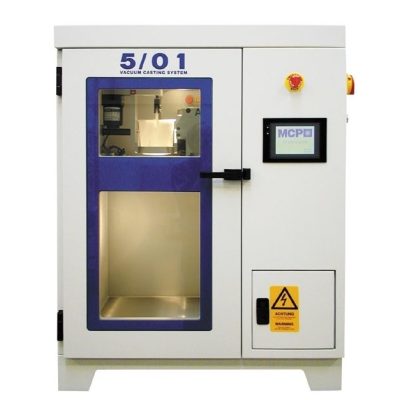The 3D prototypes produced with this technology are the result of the creation of a silicone mold from a master model first produced in
Stereolithography
.
The silicone mold created from the master model is then filled with polyurethane resin, using a special vacuum casting machine.
Mould life can range from 6 to 30 parts, depending on the geometry of your parts and the polymer used.
This technology is therefore ideal for pre-series or low-volume production runs, which will have the same appearance and mechanical properties as the final product.
The printing dimensions of our largest machine enable us to produce parts up to 1300 x 750 x 800 mm.

At Axis, we use the following materials:
Don’t hesitate to contact us for your specific needs, or consult our material sheets. Vacuum casting enables us to offer a highly flexible range of materials and colors to suit your needs.
Once your parts have been produced, we can offer you the following finishes:
For the vacuum casting process, it takes 4 to 6 working days to create the mold, followed by production of 2 to 3 parts per working day. Please contact us to obtain the precise deadline for your project.
For the dimensions of your parts, we are able to comply with standard NFT 58-000 normal class.
1 MCP 5/01: 400 x 400 x 400 mm
1 MCP 4/01: 400 x 400 x 400 mm
1 MCP 003: 560 x 600 x 600 mm
2 MCP 4/04: 900 x 750 x 600 mm
1 MCP 4/05: 1,300 x 750 x 800 mm
To find out more about our other additive manufacturing production resources, please visit our our machines page.
Need a quote or information on rapid prototyping?
Ask us for a quick quote or call us on +33 (0)5 55 06 17 17